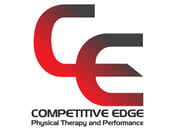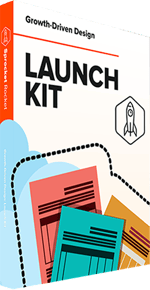I can imagine we've all spend time subjecting ourselves to the torture... uhhh.... I mean relaxing experience that is foam rolling right? After all it comes with so many benefits so why else would we be doing it?
While foam rolling can feel great, or at least great AFTER you're done with it, the effects of it are not as magical as many think, so let's first be clear on the application of foam rolling.
Rubbing on your muscles before or after your workout won't be breaking down any "trigger points" and won't result in any real lasting change in your mobility. It's not "breaking up scar tissue" or releasing any "knots" in your muscles.
The benefits of foam rolling can best be described on a neuromuscular level-meaning it affects how the muscle senses tension and pressure and relays that back to your brain to tell you to feel less stiff and tight. The benefits are temporary, but that doesn't mean they don't exist.
Foam rolling is best used prior to and after workouts to help the body get a temporary reduction in stiffness in the muscles and around joints. If using to loosen up before a workout, this is best followed up with an active warmup-something to get the heart rate elevated and blood pumping. I recommend spending 30 seconds up to 1 minute on each muscle group/body part before moving on. The additional benefit you get from using it for 1 minute vs. 5 minutes on a body part are negligible, so why not use that extra time to get a more effective warmup and mobility routine in?
If you're using it as a "recovery" tool, then you are free to spend more than 1 minute per body part. But understand that just because you are hanging out on this foam roller for 20 minutes when you're sore and tired from a hard workout, that doesn't mean you're gonna feel better than if you spent only 5 minutes total hitting up the same areas.
But what are some of your favorite ways to foam roll you ask?? Ohhh now we're getting to the good stuff! Most major muscle groups and body parts are free game when it comes to foam rolling. But there are a few ground rules.
- Stay away from bony areas- this just won't feel good and cause you to stiffen up more
- Move SLOWWWW- think about the foam roller moving 1 inch every second. Imagine you're foam rolling your thigh-this should take you about 10 seconds to move the length of your thigh muscle.
- Breathe!!- it's funny how often I have to tell patients to breath when foam rolling, it will help things relax more and get you more of the benefits overall!
- It shouldn't hurt, but it might be uncomfortable- depending on the muscle groups you're hitting, it might even go so far as to be painful. In that case, back off on the amount of pressure and see tips 1 and 3.
Here are the most common areas we have patients perform foam rolling, and why we would use them in the clinic and in the gym!
The lats (latissimus dorsi) are a big muscle group that sweep from the armpit to the low back. They work hard in movements like pullups and when they get tight they limit your ability to reach overhead. In fact- I find many of our patients that have shoulder pain have limited flexibility in the lats! Stay right up under the armpit-where most of the muscle mass is- and roll back and forth slowly... oh and when you find that really tender spot just think about hanging out there for a few extra seconds.
The thoracic spine is an important component of great overhead flexibility. Not to mention it's usually a big culprit of pain and stiffness in many desk workers, as they are in the same position (hunched over the computer) for long periods of time and this area gets pretty irritated. Crossing your arms gets the shoulder blades out of the way and focuses more on the spine itself- and if you have a bony spine beware because this can be uncomfortable if you're not careful!
Some 90% of people will experience low back pain at some point in their life-and luckily many times it does not turn into anything long term. But what about that nagging tightness you've had for years? A little roli-poli on the low back to clear that up so you can get to your workouts with less stretching! I tend not to move the foam roller much, find the meaty part of your low back muscles right above your pelvis and let your weight sink into it.
If you've used a foam roller before you've probably rolled out your quads and IT band. The IT band is that thick and sometimes painful band of tissue on the outside of your thigh. Rolling it out won't improve mobility (as we already established), but it CAN help reduce tension and tightness to get your legs moving a little easier! Stay away from the knee joint itself, but work from the top of the thigh down through the thickest parts of the muscle, and make sure to hit all different angles as we have a lot of muscle in the quads!
I have yet to meet anyone that doesn't think they have "tight hamstrings". And while that's an article for another day on why most people don't actually have "tight hamstrings" that doesn't mean you still don't perceive them as tight. Work the foam roller from underneath your butt cheek to just above the back of your knee joint for this one.
Last but not least, the calves. This could be one of the more uncomfortable areas so ease into the amount of pressure here. As with all other area, moving slow and breathing. And if you find a particularly tender area even giving that spot a little more time and attention.
We hope you got some good tips from this article! If anything doesn't make sense, please leave a comment and we will get back to you!
If you find yourself dealing with a lack of mobility and are having pain then your problem might need some further investigation. Luckily we are doctors of physical therapy that specialize in helping active people in Columbus, Ohio just like yourself get out of pain and improve mobility while reducing injury in the future!
Schedule a free phone consultation so we can determine if you're a good fit for our program!




Comments